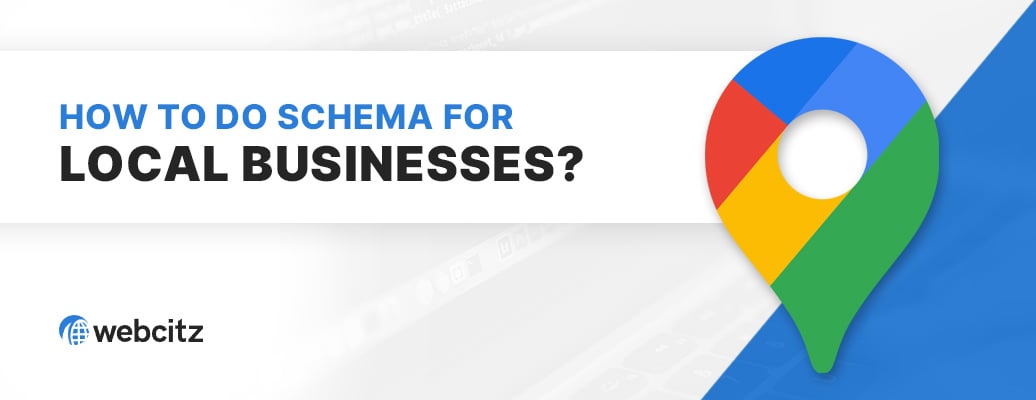Our SEO Services
To develop an effective, professional SEO campaign for your business we need to start with an in-depth review of your website, backlink profile, and competitors. This will help us understand the strengths and weaknesses of your website, which is critical to planning and prioritizing the next steps.
From there, we’ll discuss with you our findings from the detailed SEO audit and ask if you have any special requests. This type of collaboration is important because we want you to have the opportunity to ask questions and voice your opinion.
As we make progress on the SEO plan, we’ll let you know of important milestones such as tasks that were completed or improvements in your rankings. This will allow you to follow along with the progress. When we get through all our one-off SEO improvements, we’ll put together a new list and run it by you for approval. In the meantime, we’d be continuing with any recurring SEO services like content development and link building.
This process continues as past objectives are completed and new ones are made. There is almost always new content that can and should be added to your website, there are always new opportunities for improving your backlink profile, and there will always be competitors looking to take your position in search engine results pages (SERPs).
Let’s break down the three types of SEO:
1.) Technical SEO Services
The first topic we’ll cover is technical search engine optimization. This part of our review looks at factors like your page speed, website security, XML sitemaps, structured data, and website crawlability.
These are considered technical SEO factors because they relate to the development of your website. It is important to review for technical SEO issues because they can impact the ability of search engines to crawl your website. If your website is slow, insecure, or poorly structured you’ll likely have difficulty ranking for highly competitive search phrases.
To resolve technical SEO issues, you’ll likely need the help of a web developer familiar with your website’s platform. Not to worry though, we have onsite web developers who work closely with our SEO team. Best of all, most technical SEO issues are one-time fixes and don’t often reoccur until a major change is made to the website.
Here are some of the most common technical SEO services we offer:
- Improving page speed to help you pass Google’s Core Web Vitals.
- Fixing issues with website security, such as missing SSL certificates or mixed content.
- Setting up automated XML sitemaps to help search engines find deeply nested web pages.
- Fixing coverage issues reported in Google Search Console.
- Improving the usability of your website on mobile and tablet devices.
- Implementing structured data so search engines better understand the content on your pages.
- Adding Open Graph tags to help improve the appearance of your website in social media.
- Fixing issues reported in audit results of SEO scanning tools.
A Few of Our SEO Experts





2.) On-Page SEO Services
The next topic we’ll cover is on-page search engine optimization. This part of our review looks at factors like your URL structure, page hierarchy, content quality, internal / external linking, keyword cannibalization, and meta tags.
These are considered on-page SEO factors because they relate to how page content is organized and displayed to search engines and visitors. Most business owners think of on-page SEO as the most important part of search engine optimization, likely because it includes the page content written to represent their brand.
To improve your on-page SEO you’ll need the help of a content writing team. When building out effective website content you must understand the concepts of content silos, latent semantic indexing, keyword research, gap analysis, competitive metrics, and much more.
Here are some of the most common on-page SEO services we offer:
- Implementing SEO content silos to create highly relevant sections within your website.
- Writing unique content that hasn’t been spun through AI tools.
- Building out supporting content around your parent topics to establish authority.
- Performing keyword research to understand what you should be writing about.
- Adding a blog to your website to help organize supporting content.
- Reviewing keyword frequency and latent semantic indexing.
- Optimizing the URL structure to be SEO-friendly.
- Planning out frequently asked questions to add into structured data snippets.
- Implementing an internal linking structure to prevent orphaned pages.
- Adding original images to the page content to break up text and provide value.
- Implementing outbound links to authority websites that support your content or opinions.
- Going through Google Search Console to understand the queries bringing in traffic.
- Improving the readability of your content through better typography or content breaks.
- Working on call to actions and other conversion-related improvements to reduce bounces.
- Prioritizing helpful page content above the fold of the website on mobile.
- Improving page titles, meta descriptions, alt tags, and heading tags.
As you can see from those examples, the process of on-page search engine optimization is more involved than writing a few paragraphs and tweaking some meta descriptions. You must approach on-page SEO in an organized manner.
For instance, the on-page optimization process we follow starts with a thorough review of your website to determine a good starting point. From there, we compare your website to competitive websites both locally and nationally to better understand what gaps you have in content writing and search rankings. This allows us to assemble a list of suggestions based on what will provide the fastest return on investment.
Speaking of which, return on investment is an important metric to consider when working through on-page search engine optimization. Writing quality meta descriptions is often an overvalued service within on-page SEO. We often work on SEO projects with thousands of web pages or product pages. It simply isn’t economical to write a high-quality meta description for thousands of pages because you’d be investing hundreds of hours of work into that project. When managing your SEO services, we’ll keep ROI in mind and provide suggestions on how to make improvements be cost-effective.
3.) Off-Page SEO Tactics
The last topic we’ll cover is off-page search engine optimization. The most overlooked aspects of search engine optimization are off-page ranking factors. When discussing off-page SEO, we are referring to how your website is perceived by search engines based on the quality of your backlink profile.
Your backlink profile is simply the collection of websites and web pages that link back to your website.
How to build a healthy backlink profile
Here are some of the best ways to build out quality backlinks.
- Build backlinks from relevant websites within your niche.
- Focus on slowly, yet consistently, building your backlink profile over time.
- Stay away from spam websites and PBNs as backlink opportunities.
- Maintain more backlinks with anchor texts of your business name or URL versus focus keywords.
- Try to build more low-authority backlinks than medium or high-authority backlinks.
Safe ways to build backlinks
To build out a backlink profile, you will want to choose white-hat SEO strategies that don’t violate Google’s guidelines.
- Create an account with HARO, Featured.com, or Qwoted and respond to questions related to your industry.
- Reach out to blog authors in your business industry to ask about guest posting opportunities.
- Take an active interest in promoting your business in social media campaigns.
- Write longform blog articles (skyscraper articles) that provide expert advice on topics related to your industry.
- Add your business to any relevant directories you can find online, which improves citations.
Risky ways to build backlinks
If you are interested in being more aggressive with your link building, you can choose grey-hat to black-hat link building schemes. These carry much more risk, even when implemented with caution.
- Paying for guest posts or niche edits on third-party websites.
- Purchasing backlinks from PBNs, which are known as Private Blog Networks.
- Building out your own PBN.
SEO Cost Calculator
Answer a few questions to see estimated pricing, then call 800-796-8263 or send us an email to get started!
Our Managed SEO Campaigns
When hired to perform technical, on-page, and off-page SEO it is often for local businesses, franchise operations, ecommerce storefronts, or complex enterprise websites.
Let’s discuss how we help each of these types of businesses improve their search rankings.
1.) Local SEO Services
The most common type of search engine optimization we perform is for local businesses. The reason being is simple – the country runs on small businesses!
For example, if you were an HVAC contractor in Chicago, you’d want to be seen higher in search results for “Chicago HVAC contractors.” To help that HVAC contractor in Chicago rank higher in search results, we’d go through all our previously mentioned technical, on-page, and off-page search engine optimization services.
There are some key differences to handling local SEO campaigns. For instance, for a local business we typically start by going through these local SEO services:
- Perform a local SEO audit to determine the quality of the competitors’ websites, what content or keyword gaps exist in your website, and where you are currently ranking online.
- Create or optimize your Google My Business account.
- Build out local citations, also known as NAP citations, as part of your link building services.
- Implement location indicators throughout your website.
- Improve your reputation management and lead-generation capabilities.
The average cost for local SEO campaigns can range from $500 to $2,000 per month.
2.) Enterprise SEO Services
While less common than local SEO, we do handle enterprise-level SEO campaigns.
A perfect example of an enterprise-level SEO campaign would be our own website. We have thousands of web pages targeting incredibly competitive keywords with an extensive white-hat focused backlink profile.
There are some key differences to handling enterprise SEO campaigns. For instance, enterprise SEO typically involves these services:
- Targeting hundreds of highly competitive search phrases.
- Maintaining thousands of web pages in a complex website.
- Developing dynamic functionality to help improve SEO.
- Managing extensive link building campaign budgets.
The average cost for enterprise SEO campaigns can range from $8,000 to $20,000 per month, based on the competitiveness of your industry, the depth of development work we’ll be handling, and the extent of your link building requirements.
3.) Ecommerce SEO Services
We are often tasked with optimizing ecommerce websites to increase their online sales by helping them show up higher in search results.
These storefronts have to compete with corporations like Amazon, eBay, and Etsy, not to mention the major online stores within their niche industries.
Here are a few key differences to handling local ecommerce SEO campaigns:
- Building out ecommerce silos to provide better relevancy.
- Guiding you toward improving product and category descriptions.
- Breaking up category content to be above and below the product outputs.
- Implementing product structured data and open graph tags.
- Improving product page layouts to include trust factors and social proof.
- Fixing page speed and usability issues to reduce bounce rates.
- Improving user experience within the page layouts.
The average cost for ecommerce SEO campaigns can range from $800 to $4,000 per month.
4.) Franchise SEO Services
Helping improve the search rankings of a franchise operation is much like performing local SEO, except it is done for multiple locations.
In this case, we do all the local SEO services described above, but for each franchisee within your organization. This often results in replicating the same SEO service repeatedly, but we have systems in place to help manage and deploy updates in bulk.
There are some key differences to handling franchise SEO campaigns . For instance, for franchisors and franchisees often have different goals in mind, including:
- Helping with the optimization of multiple Google My Business accounts.
- Providing reputation management services for each franchisee location.
- Building out an interactive store locator on the corporate website.
- Writing quality content for each franchisee’s location page on the corporate website.
- Helping improve store visits and direction requests to each franchisee location.
- Providing direct support or feedback to each of your franchisees.
The average cost for franchise SEO campaigns can range from $1,600 to $4,000 per month.
Mold Removal Contractor
Roofing Company
RV Rental
Ecommerce Website
Website Platforms We Optimize
We’re a full-service digital agency, which means we have onsite web developers and SEO experts who work together on projects.
This provides us a competitive advantage over SEO companies who must outsource technical SEO improvements necessary within your campaign.
As such, we prefer to take on SEO clients whose websites run in one of the following CMS or ecommerce platforms:
1.) WordPress SEO Services
WordPress is the most popular CMS platform in the world with a market share of more than 40%. For this reason, every person within our company has experience working within the WordPress platform. This provides us a huge competitive advantage over other SEO companies without as much experiencing optimizing the WordPress platform.
We often optimize WordPress websites by:
- Installing and configuring Yoast SEO or Rank Math.
- Optimizing permalink structures.
- Adding article or local business structured data / schema.
- Creating custom post types to organize content.
- Configuring page speed / caching plugins.
- Managing redirects within plugin settings.
2.) WooCommerce SEO Services
The WooCommerce plugin is the standard of ecommerce within the WordPress platform. When you combine our knowledge of WordPress SEO and Ecommerce SEO, are you provided one of the best search engine optimization services available for a WooCommerce SEO campaign.
We often help WooCommerce websites by:
- Adding structured data / schema for products.
- Improving permalink structures for category and product pages.
- Fixing any canonical URL issues.
- Improving product filtering URL paths.
- Building out content silos through product and category data.
- Developing supporting web content with the help of blogs and landing pages.
3.) Shopify SEO Services
We have a team of Shopify developers who work closely with our ecommerce SEO team to build out effective ecommerce marketing strategies for online stores. Let us help you increase conversions through persuasive content writing, help you find useful third-party apps, fix theme issues, and much more!
We often rank Shopify websites by:
- Improving product and category page content.
- Fixing issues within the Shopify theme that negatively impact SEO.
- Monitoring and resolving broken links throughout the content.
- Implementing content silos through products and categories.
- Developing supporting content through blogs and landing pages.
4.) BigCommerce SEO Services
We have BigCommerce developers who collaborate closely with our ecommerce SEO specialists to build effective search-optimized strategies for BigCommerce stores. From improving on-site content to integrating helpful third-party apps and resolving theme-related SEO issues, we’re here to help you increase organic traffic and boost conversions.
We can optimize BigCommerce websites by:
- Enhancing product and category page content for better keyword relevance and user engagement.
- Identifying and fixing SEO-impacting issues within BigCommerce templates and theme customizations.
- Monitoring for and resolving broken links across your store’s pages.
- Building internal linking structures and content silos using categories, brands, and product groupings.
- Creating SEO-friendly blog posts and landing pages to support product discovery and long-tail keyword targeting.
Search Engine Optimization FAQs
Why is SEO important for my small business?
SEO, or Search Engine Optimization, ensures your business website ranks higher in search engine results, making it more visible to potential customers. A strong SEO strategy can drive organic traffic, boost credibility, and increase sales for your business.
How long does it take to see results from SEO?
SEO is a long-term investment. While some changes might lead to quick visibility improvements, most strategies take months to yield noticeable results. Consistency and patience are key, but the sustainable growth SEO provides is worth the wait.
Will I get a dedicated SEO specialist for my business?
Yes, our agency believes in providing personalized attention to our clients. A dedicated SEO specialist will work closely with you, understanding your business needs and tailoring strategies to ensure optimal results.
What’s the difference between on-page and off-page SEO?
On-page SEO refers to optimizing individual pages on your website, including content, meta tags, and user experience. Off-page SEO focuses on external factors influencing your website’s ranking, like backlinks, social signals, and local citations.
How do you handle local SEO for businesses targeting specific cities?
Local SEO focuses on optimizing your business for local search results. We handle elements like Google My Business listings, local citations, review management, and local keyword optimization to ensure you rank prominently in local searches.
Can you provide content creation as part of your SEO services?
Absolutely! Content is a cornerstone of SEO. Our team includes content strategists and writers who can craft SEO-friendly, high-quality content that resonates with your target audience and drives organic traffic.
Do you use ChatGPT or AI-generated content?
Yes, we use tools like ChatGPT and other AI-generated content solutions in our writing process. However, it’s essential to understand that while these tools can be incredibly valuable for brainstorming, refining ideas, or helping with certain aspects of the content, the core of our work remains deeply human. We invest significant time and effort into researching, understanding, and crafting each piece of content to ensure its originality, accuracy, and relevance to your audience. The AI assists us in making the process more efficient, but it doesn’t replace the human touch, intuition, and emotion that we infuse into our writings.
How do you measure the success of your SEO strategies?
We use various metrics like organic traffic, keyword rankings, bounce rate, and conversion rate. Monthly analytics reports will be shared with you to ensure transparency and to show the progress of our efforts. In some cases, we may even take screenshots out of tools like Ahrefs to help you visualize improvements.
What happens if Google updates its algorithm?
Search engine algorithms are constantly evolving. Our team stays updated with the latest SEO trends and shifts in algorithms. If changes occur, we’ll adjust our strategies accordingly to ensure your website remains optimized and compliant. This is yet another reason why SEO is a recurring service.
Will you need access to my website?
Yes, to effectively implement technical or on-page SEO strategies, we’ll need access to your website’s backend. Rest assured, our team will handle your site with utmost care.
How does pricing work for your SEO services?
The cost is basically a time-and-materials situation. We work with you to determine a budget for your SEO campaign so we can help you set a realistic project scope. We typically start with budgets of $800/month.
Hear what our customers are saying













